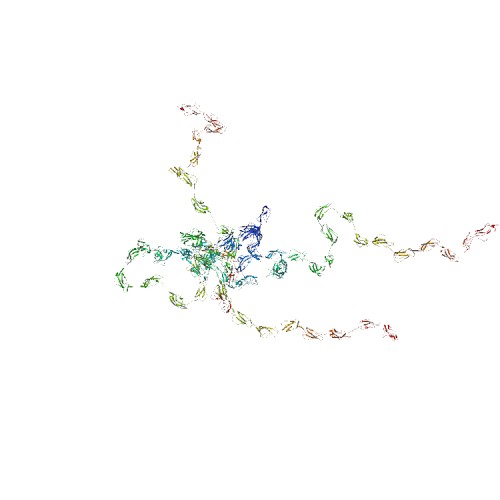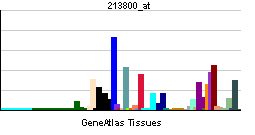Factor H: Difference between revisions
No edit summary |
(No difference)
|
Revision as of 02:33, 5 January 2009
| Complement factor H | |||||||||||||
|---|---|---|---|---|---|---|---|---|---|---|---|---|---|
 PDB rendering based on 1haq. | |||||||||||||
| |||||||||||||
| Identifiers | |||||||||||||
| Symbols | CFH ; FH; FHL1; ARMD4; ARMS1; CFHL3; HF; HF1; HF2; HUS; MGC88246 | ||||||||||||
| External IDs | Template:OMIM5 Template:MGI HomoloGene: 20086 | ||||||||||||
| |||||||||||||
| RNA expression pattern | |||||||||||||
| File:PBB GE CFH 215388 s at tn.png | |||||||||||||
 | |||||||||||||
| More reference expression data | |||||||||||||
| Orthologs | |||||||||||||
| Template:GNF Ortholog box | |||||||||||||
| Species | Human | Mouse | |||||||||||
| Entrez | n/a | n/a | |||||||||||
| Ensembl | n/a | n/a | |||||||||||
| UniProt | n/a | n/a | |||||||||||
| RefSeq (mRNA) | n/a | n/a | |||||||||||
| RefSeq (protein) | n/a | n/a | |||||||||||
| Location (UCSC) | n/a | n/a | |||||||||||
| PubMed search | n/a | n/a | |||||||||||
Editor-In-Chief: C. Michael Gibson, M.S., M.D. [1]
Please Take Over This Page and Apply to be Editor-In-Chief for this topic: There can be one or more than one Editor-In-Chief. You may also apply to be an Associate Editor-In-Chief of one of the subtopics below. Please mail us [2] to indicate your interest in serving either as an Editor-In-Chief of the entire topic or as an Associate Editor-In-Chief for a subtopic. Please be sure to attach your CV and or biographical sketch.
Factor H is a member of the regulators of complement activation family and is a complement control protein. It is a large (155 kilodalton), soluble glycoprotein that circulates in human plasma (at a concentration of 500-800 micrograms per mL). Its main job is to regulate the Alternative Pathway of the complement system, ensuring that the complement system is directed towards pathogens and does not damage host tissue. Factor H regulates complement activation on self cells by possessing both cofactor activity for Factor I mediated C3b cleavage, and decay accelerating activity against the alternative pathway C3 convertase, C3bBb. Factor H protects self cells from complement activation but not bacteria/viruses, in that it binds to glycosaminoglycans (GAGs) that are present on host cells but not pathogen cell surfaces.
Structure of Factor H
The molecule is made up of 20 Complement Control Protein (CCP) modules (also referred to as Short Consensus Repeats or sushi domains) arranged head to tail. Each of the CCP modules consists of around 60 amino acids with four cysteine residues disulfide bonded in a 1-3 2-4 arrangement, and a hydrophobic core built around an almost invariant tryptophan residue. To date atomic structures have been determined for CCPs 1-3, CCP 5, CCP 7 (both 402H & 402Y), CCP 15, CCP 16, CCPs 15-16, and CCPs 19-20. The atomic structure for CCPs 6-8 (402H) bound to the GAG mimic sucrose octasulfate has also been determined. Although an atomic resolution structure for intact factor H has not yet been determined, low resolution techniques indicate that it may be bent back in solution. Information available to date indicates that CCP modules 1-4 is responsible for the cofactor and decay acceleration activities of factor H, whereas self/non-self discrimination occurs predominantly through GAG binding to CCP modules 7 and/or 19-20.
Recently is was discovered that about 35% of individuals carry at an at-risk single nucleotide polymorphism (SNP) in one or both copies of their factor H gene. Homozygous individuals have an approximately sevenfold increased chance of developing age-related macular degeneration, while heterozygotes have a two-to-threefold increased likelihood of developing the disease. This SNP, located in CCP module 7 of factor H, has been shown to affect the interactions between factor H and both C-reactive protein and heparin indicating a causal relationship between the SNP and disease.
Association with atypical Haemolytic Uraemic Syndrome
Haemolytic uraemic syndrome (HUS) is a disease associated with microangiopathic haemolytic anemia, thrombocytopenia and acute renal failure. A rare subset of this disease (referred to as atypical haemolytic uraemic syndrome, aHUS), has been strongly linked to mutations in genes of the complement system (including factor H, factor I and membrane cofactor protein), with the factor H mutations being the most numerous. These factor H mutations tend to congregate towards the C-terminus of factor H - a region responsible for discriminating self from non-self and have been shown to disrupt heparin and C3d binding.
Sources
- Pangburn, M.K. Host recognition and target differentiation by factor H, a regulator of the alternative pathway of complement. Immunopharmacology 49, 149-57 (2000).
- Aslam M. & Perkins S.J. Folded-back solution structure of monomeric factor H of human complement by synchrotron X-ray and neutron scattering, analytical ultracentrifugation and constrained molecular modelling. J Mol Biol. 309(5), 1117-38 (2001).
- Kirkitadze, M.D. & Barlow, P.N. Structure and flexibility of the multiple domain proteins that regulate complement activation. Immunol Rev 180, 146-61 (2001).
- Hageman, G.S. et al. A common haplotype in the complement regulatory gene factor H (HF1/CFH) predisposes individuals to age-related macular degeneration. Proc Natl Acad Sci U S A 102, 7227-32. (2005).
- Kardys, I. et al. A common polymorphism in the complement factor h gene is associated with increased risk of myocardial infarction the rotterdam study. J Am Coll Cardiol. 47, 1568-75. (2006).
- Herbert, A.P. et al. Structure shows that a glycosaminoglycan and protein recognition site in factor H is perturbed by age-related macular degeneration-linked single nucleotide polymorphism. J Biol Chem. 282(26), 18960-8. (2007).
- Hocking, H.G et al. Structure of the N-terminal region of complment factor H and conformational implications of disease-linked sequence variations. "J Biol Chem" Feb 5 Epub ahead of print (2008).
Further reading
- Pío R, Elsasser TH, Martínez A, Cuttitta F (2002). "Identification, characterization, and physiological actions of factor H as an adrenomedullin binding protein present in human plasma". Microsc. Res. Tech. 57 (1): 23–7. doi:10.1002/jemt.10047. PMID 11921353.
- Rodríguez de Córdoba S, Esparza-Gordillo J, Goicoechea de Jorge E; et al. (2004). "The human complement factor H: functional roles, genetic variations and disease associations". Mol. Immunol. 41 (4): 355–67. doi:10.1016/j.molimm.2004.02.005. PMID 15163532.
- Walport MJ (2001). "Complement. First of two parts". N Engl J Med. 344 (14): 1058–66. PMID 11287977.
- Walport MJ (2001). "Complement. Second of two parts". N Engl J Med. 344 (15): 1140–4. PMID 11297706.
External links
- Complement+Factor+H at the US National Library of Medicine Medical Subject Headings (MeSH)